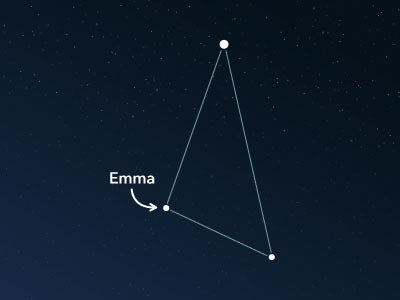The constellation Indus
Caractéristiques
- Nom latin
- Indus
- Hémisphère
- Hémisphère sud
- Visibilité
- July - September
- Région
- 294 deg²
- Étoile la plus brillante
- α Indi (HIP number 101772)
- Spécialités
- Galaxies

The Indus, Latin for Indian, is an inconspicuous constellation in the southern sky. It is not particularly large and has few bright stars. Nevertheless, there are some exciting deep-sky objects in the area.
Hemisphere, visibility, and area
The constellation Indus lies in the southern sky and is not visible from all parts of the earth. While it can be observed from all locations in the southern hemisphere, it is only visible north of the equator up to the 16th parallel. This corresponds approximately to regions such as the Cape Verde Islands, San Pedro Sula in northern Honduras, or the northernmost island of the Philippines.
The best months to observe the constellation are July, August, and September.
It is a relatively small constellation, covering only 294 square degrees of the night sky. It ranks 49th out of all 88 constellations.
The shape of Indus is also not particularly striking. The brightest stars in the area form a simple triangle. In some visualizations, the triangle is open on one side.
The small area, unremarkable shape, and faint stars make it difficult to locate Indus. No star is brighter than 3 mag. The brightest star, with an apparent magnitude of about 3.11, is the star α Indi (Alpha Indi). It is about 100 light-years distant from the earth and marks the northern boundary of the constellation.
To find Indus in the night sky, it is helpful to look for neighboring constellations. To the north, it borders Microscopium and Grus. The well-known constellation Sagittarius also borders it to the northeast. Other neighbors are Telescopium, Pavo, Octans, and Tucana.
Specialties in the constellation
There are three interesting galaxies in the area of the Indus, but they are challenging to observe.
In August 1826, the Scottish astronomer James Dunlop discovered the lenticular galaxy NGC 7049. It is a combination of a spiral galaxy and an elliptical galaxy. Images from the Hubble Space Telescope show an unusual dust ring that encloses the galaxy. Its distance from the Milky Way is estimated at 101 light-years.

NGC 7090 is another galaxy in Indus. It was discovered by the British astronomer John Herschel in 1834. It is a barred spiral galaxy estimated to be 36 million light-years away from the Milky Way.

The third galaxy is the spiral galaxy NGC 7205, also discovered by John Herschel in 1834. Its distance from the Milky Way is estimated at 72 million light-years.
All three galaxies are located in the northern part of Indus.
History
At the end of the 16th century, a Dutch fleet set out through the Indian Ocean on its way to the legendary Spice Islands in south Asia. Navigator Pieter Dirkszoon Keyser and researcher Frederick de Houtman were tasked with surveying the night sky with its particularly bright stars.
According to the commission given by astronomer Peter Plancius, the positions of 135 stars were measured and documented. Based on this data, they eventually determined 12 new constellations.
Indus was one of these newly defined constellations. The inspiration for this name was India, as the term "Indianer" (Indians) refers to the inhabitants of India. Therefore, as one might suspect, the constellation is not related to indigenous people in America.
Later, Plancius included the constellation in his celestial atlas, which Johann Bayer revised. In this version, Indus is depicted as a youth with a loincloth and curly hair, holding four arrows in his hands.
PubliéLire d'autres articles intéressants

An overview of all 88 constellations
Learn more about all 88 constellations and read interesting information about the mythology, visibility, and features.

Application Planétarium
Découvrez le ciel nocturne avec notre application de planétarium !
Disponible pour iOS et Android.

Nommez une étoile dans la constellation Indianer
Name a star in a constellation and create something that lasts for eternity.